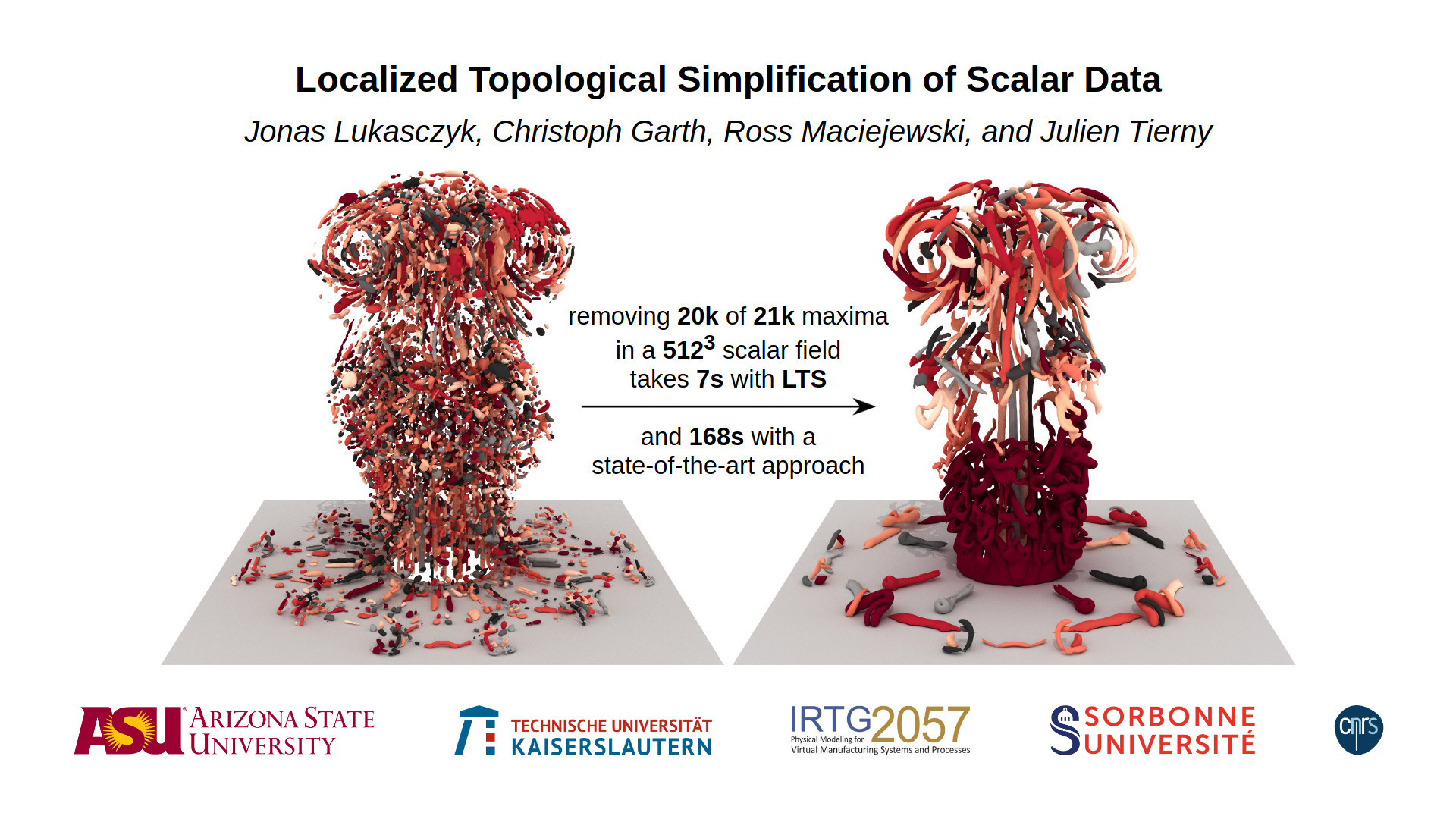Localized Topological Simplification of Scalar Data
Jonas Lukasczyk, Christoph Garth, Ross Maciejewski, Julien Tierny
External link (DOI)
View presentation:2020-10-29T18:15:00ZGMT-0600Change your timezone on the schedule page
2020-10-29T18:15:00Z

Fast forward
Direct link to video on YouTube: https://youtu.be/bP6zVaBXIlA
Keywords
Topological data analysis, scalar data, simplification, feature extraction.
Abstract
This paper describes a localized algorithm for the topological simplification of scalar data, an essential pre-processing step of topological data analysis (TDA). Given a scalar field f and a selection of extrema to preserve, the proposed localized topological simplification (LTS) derives a function g that is close to f and only exhibits the selected set of extrema. Specifically, sub- and superlevel set components associated with undesired extrema are first locally flattened and then correctly embedded into the global scalar field, such that these regions are guaranteed---from a combinatorial perspective---to no longer contain any undesired extrema. In contrast to previous global approaches, LTS only and independently processes regions of the domain that actually need to be simplified, which already results in a noticeable speedup. Moreover, due to the localized nature of the algorithm, LTS can utilize shared-memory parallelism to simplify regions simultaneously with a high parallel efficiency (70%). Hence, LTS significantly improves interactivity for the exploration of simplification parameters and their effect on subsequent topological analysis. For such exploration tasks, LTS brings the overall execution time of a plethora of TDA pipelines from minutes down to seconds, with an average observed speedup over state-of-the-art techniques of up to x36. Furthermore, in the special case where preserved extrema are selected based on topological persistence, an adapted version of LTS partially computes the persistence diagram and simultaneously simplifies features below a predefined persistence threshold. The effectiveness of LTS, its parallel efficiency, and its resulting benefits for TDA are demonstrated on several simulated and acquired datasets from different application domains, including physics, chemistry, and biomedical imaging.